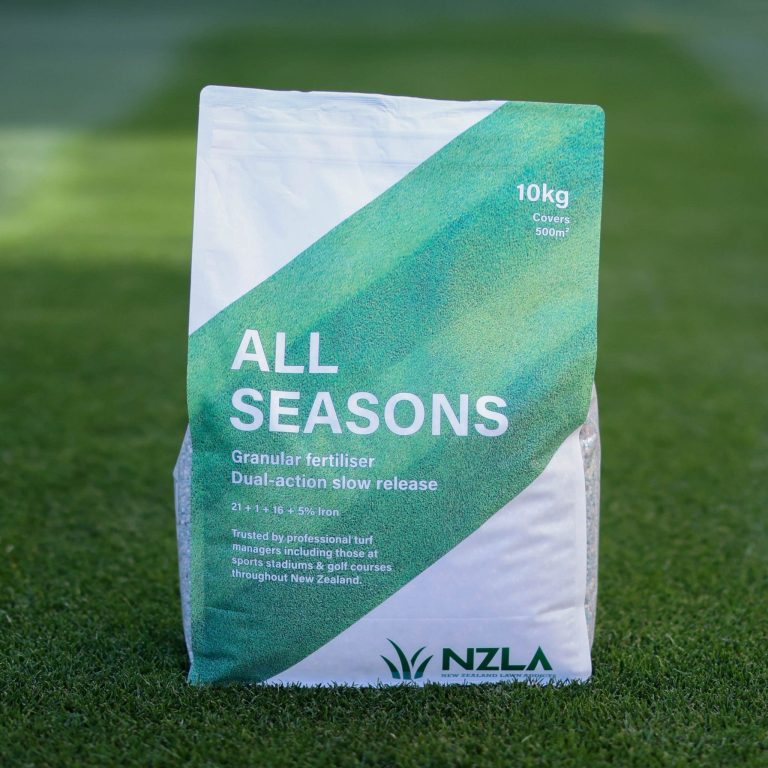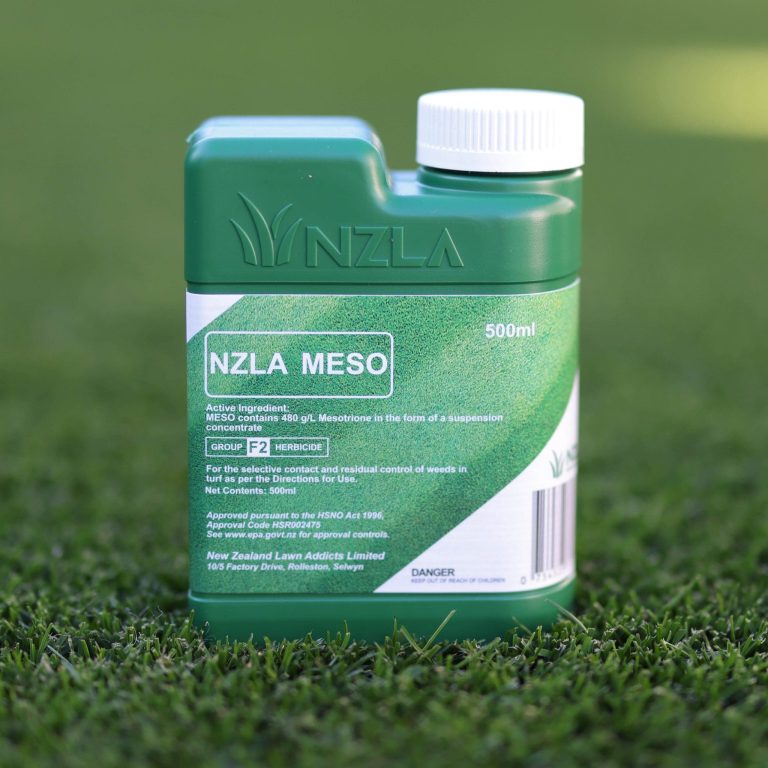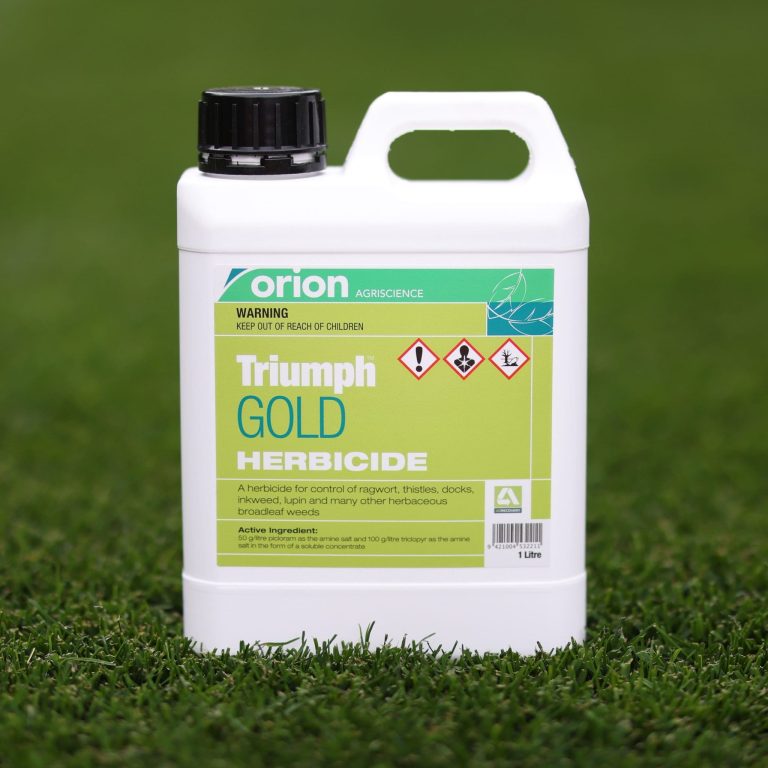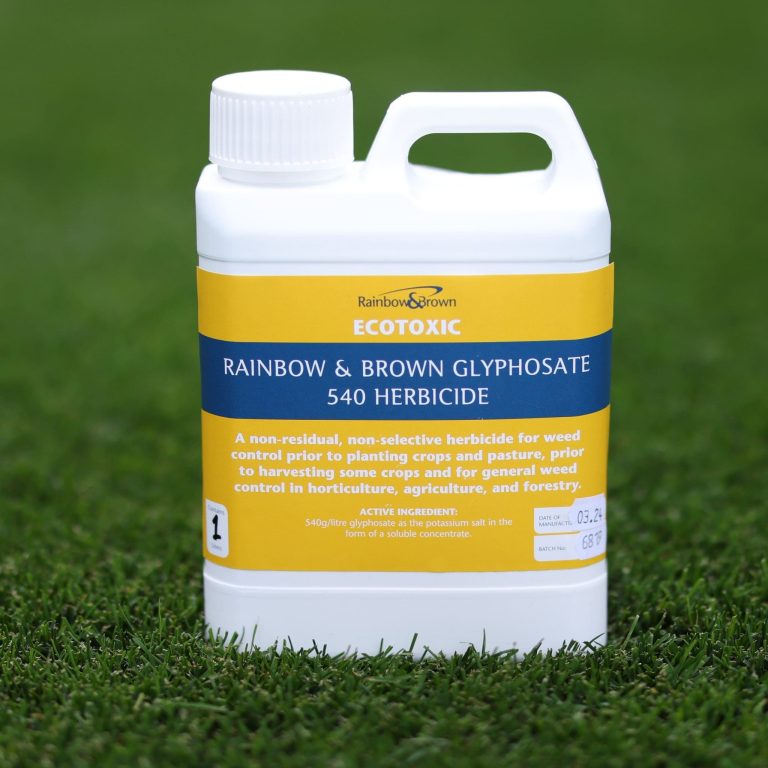Wanting to know more?
See more info about this product!
NZLA Halo Herbicide – Fine Fescue Turf Grass Control
This product can only be used on 100% pure fine fescue lawns, it will kill other grass lawn species.
NZLA Halo is a professional-grade, selective post-emergent herbicide designed for the precise removal of unwanted grass weeds from fine fescue turf. Known in the professional turf industry as “Ignite,” this formulation contains 100 g/L haloxyfop-P-methyl (R-isomer) as the methyl ester, in an emulsifiable concentrate.
NZLA Halo provides highly targeted control of foreign grasses like Poa annua, annual ryegrass, barnyard grass, summer grass, and bristle grass, without damaging established fine fescue lawns when applied correctly. It’s trusted by turf professionals, golf course managers, and fine lawn enthusiasts across New Zealand for maintaining clean, uniform turf.
Key benefits
- Selective herbicide designed specifically for fine fescue lawns
- Controls Poa annua, ryegrass, summer grass, barnyard grass, and other grassy weeds
- Gentle on established fine fescue when applied correctly
- Formulated with haloxyfop-P-methyl, an advanced ACCase-inhibiting active ingredient
- Delivers professional results for both home and commercial turf
How it works
NZLA HALO belongs to the Group A (ACCase inhibitor) class of herbicides. It stops the production of essential fatty acids in susceptible grass weeds, halting their growth and causing a gradual die-off from the growing points.
Because fine fescue metabolises haloxyfop differently, it remains unharmed when applied under correct conditions. The product works through leaf uptake, so weeds must be actively growing for maximum effect.
Visible symptoms begin within 7 to 14 days, with full control achieved in 3 to 4 weeks under normal growing conditions.
Application guidelines
Apply 15 mL per 100 m² in 8 to 10 litres of water for annual Poa and similar species. For other annual grass weeds such as ryegrass, barnyard grass, and bristle grass, use 12.5 mL per 100 m² in 8 to 10 litres of water.
Always spray when weeds are small, healthy, and actively growing. Avoid application during drought, cold, or stress periods. A second application may be needed where weeds are mature or growing unevenly.
Only use NZLA Halo on 100 percent fine fescue lawns that are at least six months old. Application to mixed or immature turf can cause injury or death to fine fescue plants.
After treatment, wait six to eight weeks before sowing new seed or overseeding. While some users reseed earlier, NZLA recommends waiting the full eight weeks to prevent poor germination and seedling damage.
Target weeds
NZLA Halo effectively controls:
- Annual Poa (Poa annua)
- Annual ryegrass
- Barnyard grass
- Summer grass
- Bristle grass
Other annual grassy weeds that invade fine fescue turf
This makes it an essential part of a professional fine fescue weed-management programme.
Best practice and safety
- Apply to healthy, well-growing fine fescue turf only
- Avoid exceeding 15 mL per 100 m² to prevent turf injury
- Use a calibrated sprayer for accurate coverage
- Avoid mowing for at least three days before and after application
- Do not apply if rain is expected within one hour
- Store in a cool, dry place away from sunlight and moisture
Halo can be harmful to aquatic life. Do not apply near waterways or drains, and avoid drift onto non-target vegetation.
Customer Reviews
Honestly one of the best products I've ever used. Does what it says on the tin, and makes Fine Fescue maintenance so much easier. I'm slowly converting more of my lawn to Fine Fescue just because this makes it all so darn easy.
Please log in to leave a review
Log InFAQs
NZLA Halo contains haloxyfop-P-methyl, a grass-selective herbicide that inhibits ACCase (acetyl-CoA carboxylase), disrupting fatty acid synthesis in grasses. Because fine fescue has a different tolerance, NZLA Halo kills unwanted grasses while leaving pure fine fescue intact when used properly.
It targets annual Poa (Poa annua), annual ryegrass, summer grass, barnyard grass, bristle grass, and other foreign grasses commonly invading fine fescue lawns.
Apply when the weed grasses are small and actively growing (not stressed). The ideal stage is early leaf development before seedhead or tiller development begins.
Use 15 mL per 100 m² (in 8–10 L water) for annual Poa control. Use 12.5 mL per 100 m² (in 8–10 L water) for other annual grasses. Do not exceed 15 mL per 100 m² or you risk damaging fine fescue.
No. It must only be used on 100 % fine fescue turf that is at least six months old. If fine fescue is still establishing, the herbicide can injure or kill the turf.
The safe interval is 6 to 8 weeks after application before sowing new seed. Though some users report success at 4 weeks, to avoid poor seed strike we strongly recommend waiting 8 weeks.
Possibly. If weeds were large, under stress, or only partially controlled, a repeat treatment may be necessary. Monitor weed regrowth and apply when grasses are active again.
Ensure turf is healthy, well-watered, and actively growing before application.
Do not exceed 15 mL/100 m².
Do not mix with incompatible herbicides.
Avoid spraying under stress (drought, heat, disease).
Do not use on mixed or non-pure fine fescue stands.
Because haloxyfop is selective to grasses, broadleaf plants are less affected when drift is avoided. However, like many herbicides, it can be harmful if misused. Take care to avoid drift, overspray, or runoff to non-target areas.
Within the turf industry, it is commonly referred to as Ignite. But in all technical and regulatory documentation, its active ingredient is haloxyfop-P-methyl, and its trade name here is NZLA Halo



